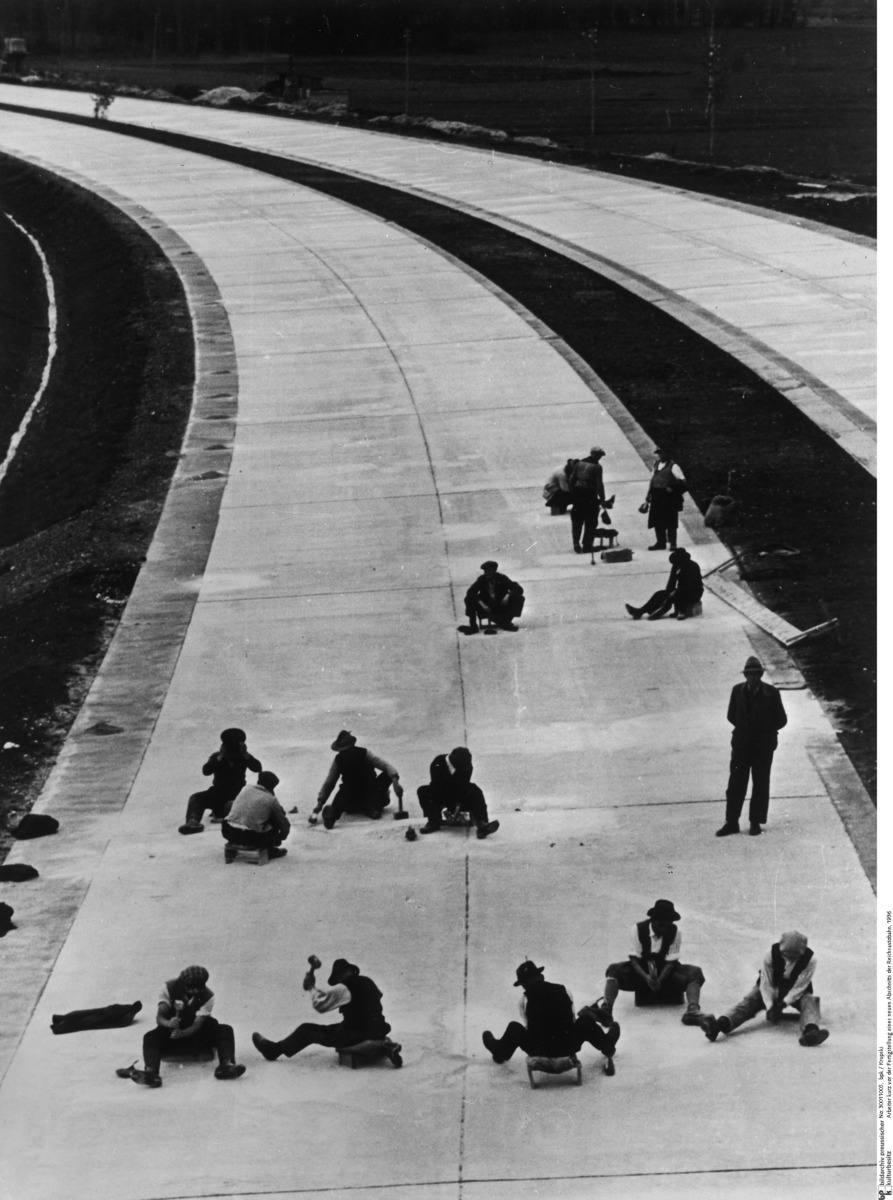Abstract
One of the largest Nazi job-creation programs was the construction of
the Reich Autobahn network, which began in September 1933. The idea for
a country-wide, multi-lane highway system was based on the Italian
model. It had already been proposed in Germany in the 1920s, but had not
been realized because of the depression. Hitler, a passionate auto fan,
revived the project after becoming Reich Chancellor. He named Fritz Todt
general inspector of the German highway system and tasked him with
developing and implementing plans for the Autobahn network. The project
was financed mainly by the Reich Institute for Labor Placement and
Unemployment Insurance. In 1936, the number of workers employed on the
project reached its highpoint at about 120,000. By 1938, 3,500
kilometers (2,175 miles) of highway had been completed. Hitler himself
took part in designing some of the highway sections, bridges, and rest
stops. After the war began, highway construction almost came to a
complete stop, and many parts of the Autobahn network were not completed
until after the war. Today, some historians regard the Autobahn network
as the Nazi regime’s most enduring propaganda project.
